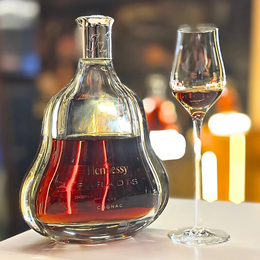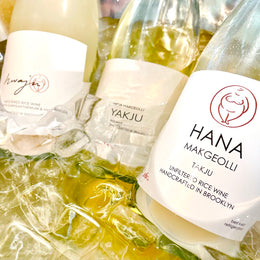A First Study In Bloodwood Honey Meads: JYFoxMazer's Ruby Nectar, Pearadise Lost, Apple Plum Faery & Blue Blood Meads

We're back with another set of meads from covert Singaporean mead-maker JYFoxMazer - yet, the same person who brought us a KFC Fried Chicken (yes, I am aware that the "FC" in KFC is indeed Fried Chicken) inspired mead.
Does this crazy genius know no bounds?
But this time we're deftly intrigued - these meads are made specifically with the use of Bloodwood Honey, which we'll get into in abit.


The Australian Bloodwood tree.
JYFoxMazer has told us of his penchant for not just playing with various adjuncts so as to create (and recreate) interesting flavours and renditions - like for example turning favourite desserts into a mead! As a big foodie himself, much of his pursuit is also informed by his own cooking and what he likes to eat. Yet, at the same time, he's also often been intrigued by unique honeys - something that isn't quite talked about as much with larger scale or more commercial mead-makers (you'd just know it was a mead that had this adjunct or that flavour, but not much attention is focused on what type of honey is actually used. As JYFoxMazer tells us, really different honeys embody very different flavours. And to that end, how you imbue a particular flavour into a mead is as much as a matter of what adjunct you use, as it is what type of honey you use.

Bloodwood honey.
Case in point - in his Rambutan mead that we previous reviewed, he had delved with us into how simply co-fermenting the honey with rambutan would effect a completely different flavour as aging the mead on say dried rambutans - or using rambutan honey for that matter! Heck, we didn't even know rambutan had honey! Yet as it turns out JYFoxMazer has been rather adept at sourcing such honeys - going so far as to find an Indonesian farmer that would collect wild Rambutan honey from the depths of the forests. When tasted, it immediately became clear the differences - with the Rambutan honey itself being rather musky and almost jackfruit or even Durian like in quality. And if you really want to go down the rabbit hole, there's also a matter of which country the honey comes from, which too influences the flavours.
This all might sound really obvious - where the honey comes from shaping its flavours - and yet it's not a topic many mead makers seem to touch upon.

Why's it called Bloodwood you ask? Fret not, the honey is really good.
And so today, what we have are four meads made with Bloodwood Honey.
Bloodwood Honey comes from Australia, from the Red Bloodwood tree, which is in fact a type of eucalypt (like a eucalyptus). On its own it's darker in colour and amongst the richest of honeys, and is known for its smooth and silky texture, with also a deep flavour of "toasty caramel, molasses and gentle florals". Now why is it called Bloodwood? Well, as it turns out the tree releases a deep red sap that kind of looks like... blood. Is this not the perfect Halloween tree?
Call us intrigued!
And so let's get into them!
Mead Review: Ruby Nectar Bloodwood Honey Traditional Mead
This will be serve as our benchmark for the subsequent iterations that will only get more interesting and more creative! This focuses on the use of Bloodwood Honey, and comes in at 13.5% ABV

Tasting Notes
Colour: Deep Honey
Aroma: It opens really rich and herbal, with a bouquet of eucalyptus and agarwood. It's incredibly complex and enigmatic. With time it's also showing acacia florals, with almost a citrusy quality of orange blossoms and finger limes. There's a mineral undertone to it as well of spring water.
Taste: Medium-bodied here, it has a luscious and almost syrupy texture, and yet isn't nearly weighty or heavy despite it's richness. It's striking a really good heft to the body where it is substantial and really satisfying, and yet without heaviness. This centers entirely on the honey, with honey's aromatics beginning to blossom, of eucalyptus, acacia, orange blossoms and fingerlimes once again. Also some very subtle earthiness of sarsaparilla and black licorice here, or something of molasses. It's entirely consistent with the aromas except with more lusciousness and richness from the honeyed texture here. It has a light acidity that gives it a refreshing lift. It's coloured by a herbal, floral and almost earthy profile, with a touch of citrus.
Finish: It carries that firm and concentrated richness into the finish. Here with more of that sarsaparilla and citrusy zest coming through, here led by burnt orange peels, dried tangerine peels and a touch of lime zest and orange blossoms. It trails off with some lavender aromatics and a wash of molasses.
My Thoughts
This was incredibly intriguing and perhaps the most interesting mead I've had thus far. As there's no adjuncts being used here, it entirely focuses on expressing the inherent flavours of the unique Bloodwood Honey. And so this expression is as much the uniqueness of the honey along with the skill of the maker in realising and showcasing those flavours - don't they say an omelette is the true test of a French chef for those very reasons? In any case, what we find here is exceptionally compelling - those herbal, floral and earthy flavours of the mead are so deftly brought to the fore here, backed up by the perfect consistency of its body, rich and supple, yet without heaviness. It's substantial so as to be perfectly satisfying and serving as the canvas for the flavours, yet without flabbyness. There's then a citrusy quality to it that gives it a nice bit of acidity that offers a lift to the richness. Also then an earthy quality to it that is hard to pinpoint, yet at the same time completely apparently - all I can tell is it's an impressionistic rendering of something of licorice, sarsaparilla and molasses.
A truly remarkable expression that displays in full both the ingredients and its maker. Bravo!
Mead Review: Pearadise Lost Pear & Cinnamon Mead
This is made with pears, bloodwood honey, cinnamon, vanilla beans and charred American oak. It comes in at 14.5% ABV.

Tasting Notes
Colour: Deep Amber
Aroma: It opens with a bright hit of green pears, backed up by a deeper note of thick manuka honey. There's a little bit of doughiness here, as well as pear blossoms. It's bright and fresh, led by the pears, which is then given a richer and deeper base of manuka honey. With time more on pear and apple compote, with alittle bit of spices of cinnamon and cloves, as well as a touch of minerality of spring water.
Taste: Medium-bodied here, it's got a roundedness and yet doesn't come off heavy or bulky. It's giving lots of pear and green apple compote, with a dash of spices of cloves and cinnamon, also reminiscent of pear pie filling. It's got great concentration and richness without being weighty. Those green fruits and spices, with the canvas of honey comes of luscious, yet lifted, with also this evocativeness of rustic purity, like having a pear pie in the countryside. Those green fruits are well complemented by the richer honey, with the spices giving an added dimensionality.
Finish: It brightens and gets more lifted here, leaning more towards the pears and less towards the honey, although the honey remains in the backdrop. Here we're on to poached and spiced pears, with also more of the orchard fruit acidity coming through nicely. It's seamless and increasingly lifted into the clean and aromatic finish. Really elegant!
My Thoughts
This was really enjoyable - it's giving us Calvados vibes, and feels like the perfect encapsulation of an evening by the countryside, with a serving of pear pie. In particular the evolution of that pear essence really develops in such a lovely manner all through the finish, amalgamating with the honey and spices in varying proportions to evoke different versions of a cooked pear. This may as well have been named Thirty-six Views of Poached Pear. Yet what was perhaps most impressive is how that pear acidity is preserved incredibly well throughout, giving the body a nice lift whilst that brighter green pear note contrasted perfectly with the deeper tones of honey and spices. A stylistically complete mead, and certainly one of our favourites till date!
PS. This was perfect as a Highball with soda water.
Mead Review: Apple Plum Faery
This is made with wildflower honey and bloodwood honey fermented at a base temperature of 16 degrees Celsius with the pure juice of 5 kinds of Aomori apples - that's Orin, Fuji, Jonagold, Toki and Kiou. It's then further aged on red plums, cinnamon, cloves and charred American oak. It comes in at 14.5% ABV.

Tasting Notes
Colour: Dark Gold
Aroma: It opens really aromatic instantly - we're on to red cherries and stewed plums, with an overall juicy and aromatic red fruit note. The plum aromatics are intense and perfumed, almost giving plum pie filling. This is backed up by darker tones of manuka honey and brighter tones of vanilla cream with some clove and cinnamon spices filling the in between. There's also a more prominent minerality to it of spring water, with the plum filling aromatics just exceptionally compelling. It's so juicy and perfumed! At the same time the aromas here are brighter and not as viscous.
Taste: Really fresh and yet well saturated, it's lighter bodied here, almost just a touch lighter than medium-bodied. It's an intermingling of the darker honey along with more on dried prunes and plums here. Some spices comes through ever so delicately into the finish. There's also this sort of redcurrant quality that comes through as well, of hawthorns and cranberries.
Finish: It continues to brighten and lift here, with just a touch of that stewed plum. The honey takes the lead here, with a touch of vanilla also starting to make a showing. It's a clean finish buoyed by the brighter honey notes.
My Thoughts
The plum pie filling here is likely the most aromatic I've ever found - it's remarkably evocative and precise, with this total aromatic intensity of plum pie filling. It's red and deep and juicy. Along the way, it starts to brighten and lighten until we get to pure honey on the finish. Where the Pearadise Lost Pear and Cinnamon Mead had the honey take the backing vocals, here we have the opposite, with the plums taking the opening mic before leaving it to the honey to clean up the act.
PS. This one also went really well on ice.
Mead Review: Blue Blood Haskap Blueberry Melomel
This is made with wildflower honey, bloodwood honey, and pressed Haskap berries fermented into a mead with whole blueberries, and aged on vanilla beans, as well as toasted cherry wood and toasted Amburana wood.

Tasting Notes
Colour: Super Dark Ruby / Merlot
Aroma: Immediately we're getting cinnamon churros, as well as French toast with blueberries over it. There's some butter in there as well, and perhaps a touch of farmhouse soft cheeses giving a slight lactic quality here. More of that blueberry in the form of fresh whole berries and alittle bit of fruit leather and preserves.
Taste: It's medium-bodied, with a quick flash of acidity of hawthorns and dark cherries, later evolving to more of a blueberry tartness. It's got good richness yet it is the acidity that leads, alittle more pointed and streaky here. It's giving crushed dark cherries and blueberries, with a touch of berry preserves and jams in there, along with a dusting of cinnamon, with an undertone of vanilla cream.
Finish: The acidity carries through and softens into the finish, with more of the dark cherry and blueberry jams taking the lead here. It's juicy and jammy, with a light tartness.
My Thoughts
The aromatics on this was really surprising and of course delightful - who doesn't like them cinnamon churros? The berries definitely take the lead the moment we taste it, with that streaky acidity immediately coming through, backed up by jams and preserves. It almost feels like we're drinking jam except here it's more lifted and lighter. Those confectionaries stay although take more of a backseat role. Into the finish, the acidity softens, allowing the fruit jams to come through more prominently, once again carrying through all that jammy juiciness. This feels like it should go on French toast.

@CharsiuCharlie







